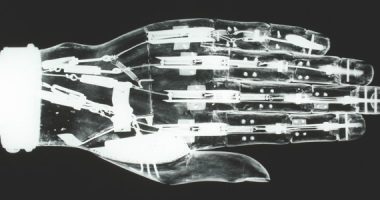
Four men on bicycle built for four, 1898. George H. Van Norman, Springfield, Mass (Library of Congress). Public Domain.
Some years ago, many people saw the popularization of digital devices and the expansion of the Web as a sign of hope. It seemed as though the introduction of new communication, storage, and management systems that did not depend on physical objects would solve most of the environmental problems facing contemporary society. Now it seems naive to think that technology, on its own, can change the ethical foundations of the market and industry and steer them towards a more environmentally friendly system of commercial values. Nonetheless, we can still argue that with good management and legal and political regulation, the internet and digital culture may significantly reduce the depletion of the natural ecosystem.
Our economic system reacts in a direct, predetermined way to technologies that don’t provide quick profits, regardless of their social impact, their contribution to increasing the common body of knowledge, and their potential use for solving global problems. The logic we live by promotes innovation but only concerns itself with technical capacity and new functionalities, disregarding other aspects such as innovation to improve manufacturing processes, the quality and durability of materials, and their upgrading capacity so as to protect the natural environment. In these matters, the dynamics by which the market functions and influences social behaviour are immensely damaging to the ecosystem.
Initiatives that aim to change the materials used in the manufacture of digital devices, with the sole intention of reducing the harmful impact of non-recyclable products, do not attract investors or secure funding. Alternative energy sources that seek to end our systemic dependence on fossil fuels are bought up by the big fossil fuel lobbies which seek to hinder their implementation so as to maintain the current business model for as long as possible. Projects that try to use more environmentally friendly manufacturing processes based on reusable materials, without necessarily increasing turnover, generally cannot find funding: the idea seems to be that unless profits increase, there is no point investing.
In spite of the market’s lack of interest in projects of this kind, their enormous potential to improve living conditions on a global scale is clear. Digital technologies are a great ally for solving many of the environmental problems that we face, both at the public and private levels.
Open data as a Prerequisite for Smart Cities
In this sense, the main activity of government departments is to manage and use big data to discover the real needs of the city, in terms of its technical functioning and the way citizens behave. An example is traffic control based on the actual behavioural parameters of vehicles, which can then be used to set variable speed limits depending on air pollution levels, or to change the direction of certain streets depending on the traffic saturation at different points in the city.
Artificial intelligence systems can be used to improve the behaviour of most of the technological systems that control and regulate our cities, but programming them requires open access to big data. This is the main underlying premise of open data, which is based on the idea that certain data should be available for everybody to use and modify without restrictions from copyright. Only open access and public ownership of the data generated in cities will allow city managers to develop the tools required to transform this data into initiatives intended for the good of society. Barcelona is a good example of a city that is making progress towards becoming a smart city, based on the use of open data. The website opendata.bcn.cat allows users to search various fields in an open data repository that provides very useful in-depth knowledge of the city, which can be used by potential developers of new adaptable, interactive resources.
The smart cities concept is based on a three-part equation: sensors + data + software. First, we need sensors to gather as much information as possible (while respecting user privacy and anonymity), then this information has to be classified as accessible data, and finally we need software that can transform the data into digital tools that can be used to solve real problems. With this in mind, there are many projects that provide data visualisation and manipulation functionalities for city planning purposes. City simulation and app development support platforms like Matsim, CitySDK and the European projects Eunoia and Besos are good examples of what technology has to offer in this field. Used in conjunction with the Open Sensors Platform (OTS), we have sufficient tools to help us turn technology around and start working towards a cleaner and more sustainable environment. The increasing affordability of sensors and computer hardware, including new open-source hardware initiatives, add the final component required to complete the abovementioned equation.
Another aspect to take into account is the fact that the path towards smart cities is expected to be given a tremendous boost by the consolidation of the Internet of Things, in which physical objects are embedded into the digital fabric, with network connectivity that allows them to collect and exchange data. Once enough objects are connected to the net, the radical separation of the virtual and physical worlds would no longer make sense. Experts estimate that fifty billion objects will be connected to the Internet of Things by 2020.
In the case of the city, once vehicles are connected to the net, we will be able to use algorithms to improve the efficiency of traffic control and reduce air pollution, the lifespan of components that generate waste, and driving efficiency. Similarly, the connectivity of street furniture and other elements in public space will allow us to manage street lighting, watering systems, and waste collection in a much more sustainable way.
The Home: Environmentally-friendly domestic life
However, solutions cannot just be on the macro level. In fact, energy consumption, which is one of the major environmental problems, has a lot to do with our individual behaviour and habits in the home. The measures proposed by local councils, governments and international organisations will never be effective or sufficient unless citizens become active agents committed to their implementation.
The internet and digital technologies also provide accessible solutions to improve the way we manage energy use and reduce fossil fuel consumption in the home. Home automation systems that allow users to programme certain household items and tasks through centralised control and internet connectivity are becoming more affordable and accessible to a large part of the population. These smart homes allow users to configure climate control systems based on geographical location, the climate, weather forecasts, our habits, and so on. For example, your climate control system could turn off the heating if you open the windows, or turn it on a little while before you get home thanks to GPS tracking that tells it when you are due to arrive. Smart appliances also improve the efficiency of food management, for example. They can monitor the expiry dates on your groceries, let you know that you need to eat an item before it goes off, and remind you to reduce the temperature of your fridge in winter. Through these types of systems, the interconnection of physical objects managed through mobile devices opens up new horizons for efficient management of the home, and also business premises and public buildings.
Meanwhile, as user awareness grows, projects that seek to encourage more responsible manufacturing are starting to find a market niche in which to develop alternative products based on ethical and more environmentally friendly principles. Fairphone, for example, produces affordable modular smart phones with parts that can be replaced or upgraded in order to increase capacity. Moreover, the manufacturing process complies with the principles of fair trade, ensuring that the workers are not exploited and the environment is not damaged in order to obtain the raw materials. Google also has a project along these lines, Project Ara, which isn’t based on the philosophy of fair trade, but does use a modular design for smart phones that makes it possible to considerably prolong the lifetime of the device and significantly reduce the waste generated.
Conclusion: Do we really want to save the planet?
The above examples focus on the design and production of more environmentally-friendly devices and systems that add qualitative value. But it is not only up to technology companies to adopt environmental values and to respect the environment. As users and purchasers, we also have to adopt these values. We need to demand more than just efficiency and functionality from our digital devices: a product that is not environmentally friendly should not be considered high quality or desirable.
The time has come for all of us to become aware of the enormous potential of technology to contribute to building a social and economic model that is fairer and more sustainable. But before we start putting our efforts into designing a feasible and effective roadmap for the preservation of the ecosystem, we need to honestly ask ourselves the first and foremost question: do we really want to save the planet? Are we prepared to go beyond rhetoric and good intentions, and take action in our daily lives? In other words: are we willing to leave the car at home unless we really need it, to use less polluting means of transport even if it requires an effort, to go easy on climate control in enclosed spaces, to use devices until they stop working rather than constantly replacing them with newer and more fashionable models, to stop and consider whether we really need something before we buy it, to take action against excessive packaging and the use of non-reusable materials…?
We have to decide whether we want to create a technological and consumption framework that will not become the final executioner of the ecosystem as we know it, but an ally in its preservation. Because the main problem we face is the fact that our current economic system is unsustainable. The unbridled consumption of raw materials and the constant manufacture of new products are totally incompatible with respect for the natural environment. So unless the logic of the market turns around and adopts the universal ethical value of the human species, the sustainability of the planet will continue to be undermined.






Leave a comment